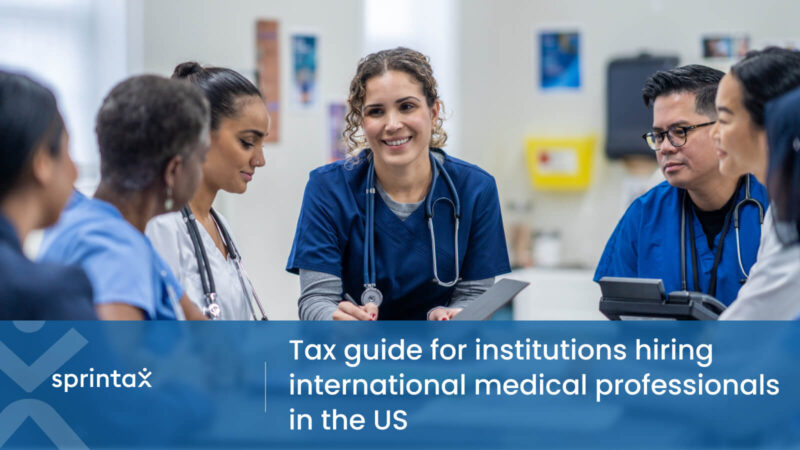As healthcare systems across the US seek top talent, many institutions turn to international medical professionals—including doctors, researchers, and residents—to fill vital roles.
While this brings global expertise to local communities, it also adds a layer of tax complexity for HR and payroll teams. That’s where Sprintax Calculus comes in.
This guide is designed to help hospitals, research centers, and academic medical institutions understand how Sprintax Calculus streamlines tax compliance when hiring nonresident medical professionals.
What’s the difference between a resident and a nonresident alien for tax purposes?
Resident aliens are taxed on their worldwide income (similar to US citizens).
Nonresident aliens are only taxed on US source income and certain foreign source income that is effectively connected with a US trade or business.
Resident aliens will file Form 1040, while nonresidents will file 1040-NR.
A dual status resident is a person that was both a resident alien and a nonresident alien in the same tax year. Respectively, dual status residents are taxed as nonresident alien for the part of the year they are nonresident alien and as a resident for the rest of the year.
Hiring medical professionals – tax considerations
When institutions hire foreign nationals under J-1, H-1B, or F-1 visas (often for research, residency, or fellowships), they face unique tax questions:
- Is this individual a resident or nonresident alien for tax purposes?
- Does a tax treaty apply (e.g., India–US, China–US)?
- Which IRS form is required—W-4, 8233, W-8BEN, or W-9?
- What’s the correct withholding rate?
As a US company paying foreign employees, knowing the answer to these is key to ensuring the nonresident remains tax compliant with the IRS.
Hiring medical professionals in your organization? Here’s how Sprintax can help you!
What Sprintax Calculus does
Sprintax Calculus is built to solve some of the challenges for institutions hiring foreign professionals.
Key features of Calculus:
- Automates tax residency determination
Uses the IRS’s Substantial Presence Test to instantly assess whether an employee is a resident or nonresident for tax purposes. - Checks tax treaty eligibility
Automatically applies the correct treaty article (e.g., Article 15 for employment, Article 21(2) for scholarships with services). - Generates the right forms
Depending on visa status and income type, Sprintax Calculus generates:- Form 8233 – For claiming income tax treaty exemptions (e.g., Article 15 or 16)
- W-4 – For residents or nonresident scholars performing services
- W-8BEN – For select non-service scholarships or passive income
- W-9 – If the individual becomes a resident alien
Sprintax Calculus will enable seamless application of correct withholding rates, reducing IRS audit risk and manual processing.
Example: Hiring an Indian medical resident
Let’s say your hospital sponsors an Indian national for a medical residency under a J-1 visa:
- Sprintax Calculus evaluates if they qualify as a nonresident alien (likely yes in the first few years).
- It checks the India–US tax treaty, which allows exemption on income from teaching/research under Article 21(2).
- Form W-4 is generated, instructing payroll to treat them like a resident for withholding, per treaty rules—no 8233 or W-8BEN needed.
Hiring global medical talent comes with critical tax responsibilities.
With Sprintax Calculus, institutions can ensure that international medical professionals are taxed accurately, treated fairly, and welcomed with a smooth onboarding experience.
So, why not get started with Sprintax Calculus today?








